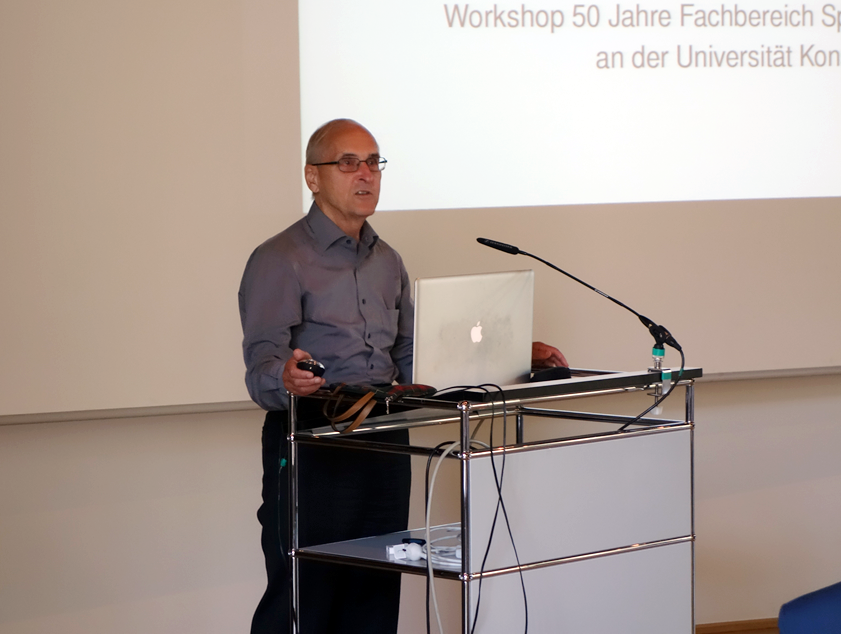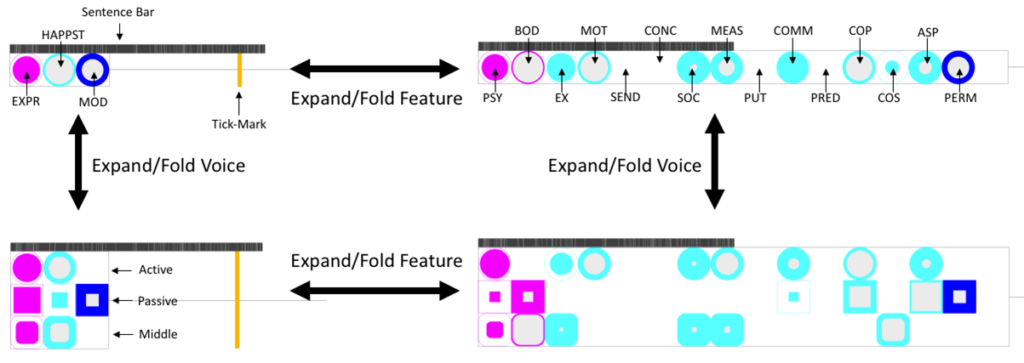On the 23rd of June, Paul Kiparsky, professor of linguistics at Stanford University and honorary doctor of the Department of Linguistics of the University of Konstanz, gave a talk at the 50th anniversary workshop of the lingustic department in Konstanz in which he talked about “The Konstanz Approach: An Appreciation and an Emulation”.

Professor Kiparsky’s talk was part of a longer research stay. Reason for his visit in Konstanz was the exchange of information and ideas between linguists, computational linguists and computer scientists. Discussions between Paul Kiparsky, Miriam Butt, Christin Schätzle, Dominik Sacha and Mennatallah El-Assady were concerned with ideas on visualizations for (historical) linguistic change.
Christin Schätzle and Dominik Sacha presented their research work on the diachronic visualization of dative subjects in Icelandic (Christin Schatzle, Dominik Sacha: Visualizing language change: dative subjects in Icelandic. In Proceedings of the LREC 2016 Workshop “VisLR II: Visualization as Added Value in the Development, Use and Evaluation of Language Resources”, pages 8–15) in order to provide Paul Kiparsky with an example for the visualization of language change over time. The feature glyph design of the visualization is illustrated in the figure below. On the other hand, they received linguistic feedback from Paul Kiparsky on the data itself, but also on the perception of the visualization from the perspective of a historical linguist.

Moreover, Mennatalah El-Assady showed how topic sequences can be visualized over time, e.g. during a debate or in a historical text corpus, and how to find clusters of dominant topics in there. Later, in a smaller setup, Paul Kiparsky, Miriam Butt and Christin Schätzle discussed theories on the historical emergence of oblique subjects in Indo-European. This meeting was part of an already existing and fruitful exchange of ideas and collaboration with Paul Kiparsky.

